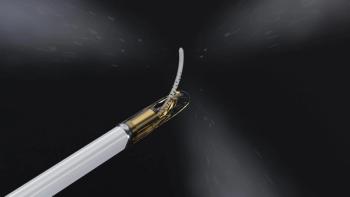
MR elastography expands liver disease imaging
A study by Mayo Clinic researchers suggests MR elastography could provide noninvasive diagnosis of hepatic fibrosis, potentially reducing the need for biopsy.
A study by Mayo Clinic researchers suggests MR elastography could provide noninvasive diagnosis of hepatic fibrosis, potentially reducing the need for biopsy.
Chronic liver disease usually turns into hepatic fibrosis. The condition may lead to cirrhosis, major disruption of liver function, and death. Proper diagnosis can help physicians cure the condition if detected in its early stages. Yet conventional imaging fails to detect it. Biopsy, the diagnostic gold standard, is invasive and can lead to complications. And biopsy's accuracy has recently been questioned.
MR elastography could provide an accurate noninvasive alternative. It may lead to wider screening for liver fibrosis, said principal investigator Meng Yin, a doctoral candidate at Mayo Graduate School of Biomedical Engineering in Rochester, MN.
Yin and colleagues tested an MR elastography technique developed at Mayo in a series of 12 healthy volunteers and 12 patients with biopsy-proven fibrosis. The technique involved a gradient phase-contrast echo sequence that registers the magnet's mechanical waves as they propagate through the liver. Postprocessing then generates an elastrogram, or quantitative map of tissue stiffness.
The investigators found MRE results from liver fibrosis patients showed significantly higher shear tissue stiffness compared with normal subjects. Yin presented her group's results at the 2005 RSNA meeting.
Hepatic stiffness measurements in the 12 normal volunteers showed a mean value of 1.94 kilopascals (kPa), similar to the stiffness of adipose tissue and much softer than many other tissues such as muscle, kidney, and brain. All shear stiffness measurements in patients with chronic liver disease yielded significantly higher values (mean 5.33 kPa). The hepatic shear stiffness in the patient group also correlated with the severity of fibrosis at biopsy.
Millions of patients worldwide suffer from hepatitis C, and a significant fraction will develop cirrhosis. There is no way to reliably predict which patients will develop significant fibrosis, even if some risk factors have been identified. Obtaining repetitive liver biopsies in all patients is impossible. Noninvasive monitoring of liver fibrosis progression would be of great help in understanding the condition's natural history in patients with hepatitis C. It would also enable the assessment of antifibrotic therapy effects, Yin said.
"The availability of a reliable noninvasive diagnostic method could lead to earlier detection of liver fibrosis in patients at risk, thereby increasing the chance of successful treatment," she said.
The Mayo pilot clinical trial is ongoing. Additional clinical data remain consistent with those reported at the meeting. Researchers have developed even more rapid EPI-based MRE acquisition sequences that now allow for multislice liver MRE acquisition times as fast as 20 seconds. Multisite trials will begin next year.
For more information from the Diagnostic Imaging archives:
Newsletter
Stay at the forefront of radiology with the Diagnostic Imaging newsletter, delivering the latest news, clinical insights, and imaging advancements for today’s radiologists.


























